Advanced Bonsai Tree Care Guide
Practicing bonsai tree care is essential if you want to keep any species healthy and strong. Beginners often take many aspects for granted when they begin, only realizing how much is involved at a much later stage. While maintenance isn’t that challenging, there are many factors to consider to ensure the best management of your miniature landscape.
Since this topic can expand into the length of a book, we’ve decided to take a new approach. We’ll cover as much of each topic briefly to spare you reading too much while giving you just the facts. In some places, we’ll place links to articles where we expand on the subject matter so that you can read more if needed.
In our advanced bonsai tree care guide, we’ll cover the following aspects:
Guide to Bonsai Tree Care
In this section, we’ll cover all the finer details of bonsai tree care. We’re going to keep it short and sweet, as we have a lot you need to keep in mind. We encourage you to click on any links for more in-depth details.
Watering Your Bonsai
Firstly, we want to look at one of the most significant care aspects. Without water, your bonsai tree will die. Not only do you need to know how often and when to give this precious resource, but you need to consider when it’s too much or too little.
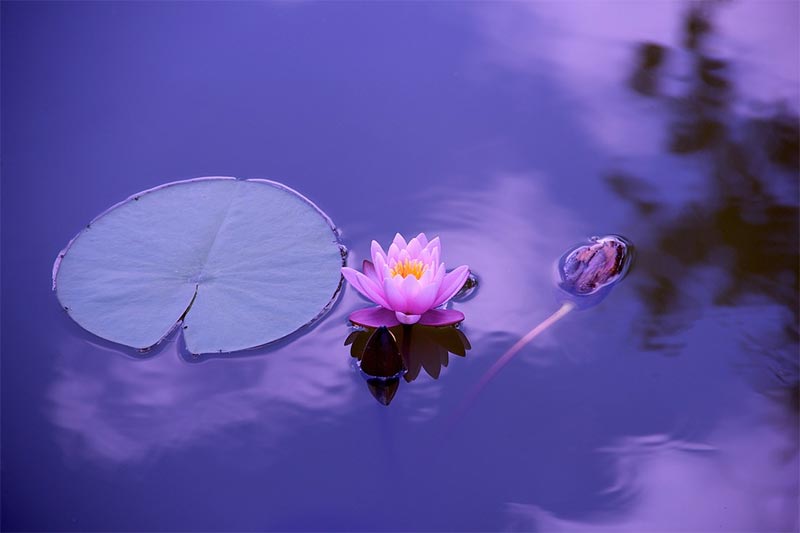
How Often Should A Bonsai Tree Be Watered?
Learning how often you water a bonsai tree can be instrumental to the health of your beautiful landscape. It depends on several aspects, such as soil type, fertilizer, species, and size. Exposure to sunlight can also influence how quickly the water evaporates or is consumed, while pests and diseases can also have a detrimental effect.
How Do I Know If My Bonsai Needs Water?
Our recommendation is that you place your finger in the top two to three inches of soil. You can also use chopsticks or a meter, but using your finger is quick and easy. If you feel that the substrate is still moist, you can wait another day. If it’s dry, it’s best to give it some liquid.
Can You Water A Bonsai Too Much?
In most cases, the shallow pot and sufficient drainage will prevent too much water. However, there are cases where an overwatered gardenia or juniper drops leaves or twigs. The main reason this causes a problem is due to root rot that forms and ultimately kills the bonsai.
Should I Mist My Bonsai Tree?
While misting does increase humidity around the foliage, it only lasts for a few seconds. Also, the stagnant liquid can cause other problems on the leaves. If you want to care for your bonsai tree properly, you should invest in a bonsai humidity tray. The heat and light evaporate the water, increasing the moisture in the air for a longer period.
How Long Can A Bonsai Tree Go Without Water?
It depends on the location, species, and season. There are some hardy trees that can go up to two weeks without a drop of water, but they may not look too healthy for much longer. In summer, you should water at least once daily or every second day, while winter sees them last on watering once weekly.
How Do You Fix An Overwatered Bonsai Tree?
Overwatering a bonsai can cause damage to the roots, affecting the overall health of the tree. To care for it from this point on, you’ll need to move it to a cooler location away from direct sunlight. You’ll give it chance to grow new, healthier roots as the soil dries out. Wait until the substrate feels dry to the touch before you splash it with water again.
Can I Water My Bonsai Tree With Ice Cubes?
Some species prefer plenty of water, where they want the soil drenched. In these cases, a slow-release system like ice cubes is not a good idea. However, there are plenty of bonsai trees that are happy with only receiving a small amount at a time, as long as you don’t let the soil dry out.
Can You Water Bonsai Trees With Tap Water?
When it comes to proper bonsai tree care, tap water isn’t always recommended. In most cases, you can get away with it as long as there are no salty deposits in the tray or under the pot. You may want to collect rainwater if you find that the tap has hard water that contains too much chlorine or other chemicals. If you’re concerned, you can look at our quick guide for how to make tap water safe for plants.
What Type Of Water Is Best For A Bonsai Tree?
If you want the best water for bonsai, rainwater is the way to go. There are no added chemicals, and it’s the main source of mineral-rich liquid that trees acquire in the wild, besides the water within the ground. However, it’s not always possible to collect rain in some areas, especially in summer. In these cases, you can use ice cubes or normal tap water.
Placement, Light, And Temperature
Another essential aspect of bonsai tree care is the location in your home. You’ll need to ensure that there’s sufficient light, while you don’t want it to become too warm or cold. Let’s take a look at which aspects you’ll need to consider.
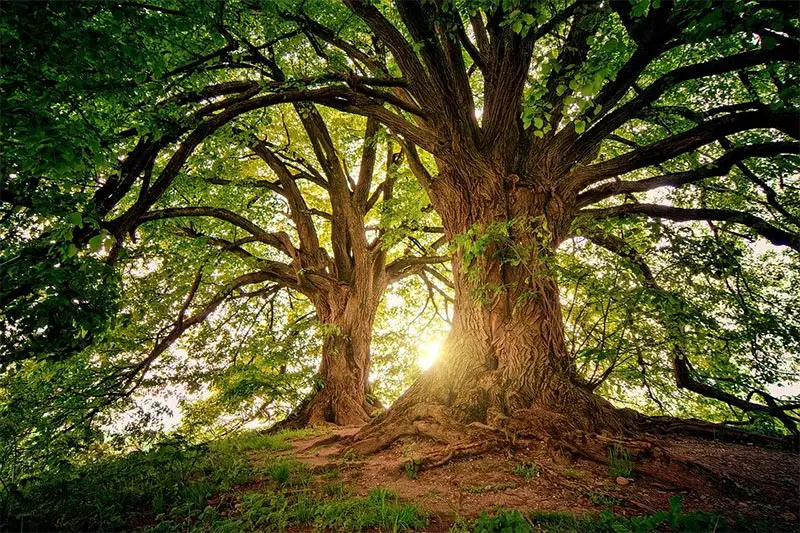
Do Bonsai Trees Need A Lot Of Sunlight?
Just light any plant in nature, bonsais trees do need sun. They use the sunlight to make food, which keeps them healthy and strong. Some species prefer a few hours in the morning with some shade in the afternoon. Others want to bask in the sun all day long. You’ll need to watch the leaves to ensure that they don’t burn in summer.
Where To Place Your Bonsai Tree
If you’re planning to care for your bonsai tree inside your home, it’s best to have it at a window that receives several hours of morning light. Determining where to place the tree is essential for allowing it enough light to produce the amount of food it needs. If you’re comfortable leaving it outside, ensure it has some shade during the hottest part of the day.
Can Bonsai Trees Survive Without Sunlight?
It can be challenging working out how much sunlight a bonsai needs. However, the fact remains that it requires as much natural light as possible. Without this basic bonsai tree care, it will slowly die without the right nutrients to sustain it. Even if you don’t have access to direct sunlight, there are other options you can try.
Do Indoor Bonsai Need A Grow Light?
If your indoor tree needs more care and light, you can use a bonsai grow light. It’s especially beneficial in winter or colder climates, as it will help stimulate flowering and healthy leaves. There are different types, such as HID, fluorescent, and LED. You’ll need to look at your setup to see which one will work the best for you.
Will Bonsai Grow In Low Light?
There are plenty of species that are considered low light bonsais. They thrive in these conditions, which make them ideal for apartments and indoor areas that don’t receive much sunlight. As long as you give the bonsai tree the care and love it needs, it will grow strong and beautiful. There’s also nothing wrong with taking it for a walk outside now and again.
Do Bonsais Like Full Sun?
There are some bonsai trees that need direct sunlight all day long to produce enough food. Other species have leaves that burn easily, so it’s best to keep them out of the light during high noon. In most cases, five to six hours of sunlight is sufficient to keep them thriving and happy.
Can Bonsai Grow In Indirect Sunlight?
Low light and indirect sunlight are not the same things. The latter is between full sunlight and low light, where it still receives natural light, albeit from a slight distance. Many bonsai trees will enjoy the care you provide if you place them in a location that has indirect sunlight, as long as they receive enough hours of it during the course of the day.
Can A Bonsai Tree Survive Outside?
Since a bonsai mimics a massive tree in the wild open fields, it stands to reason that it can also survive outside. When it’s summer and spring, it will enjoy the breeze of the wind and the heat of the sun on its foliage. However, the thin trunks and branches may not do too well in cold temperatures, you’ll want care for your bonsai trees inside during winter.
How Hot Is Too Hot For Bonsai?
Many hardened species are accustomed to living in extremely hot temperatures. However, even they have your limits at 90 ℉ or more. If you want to give the bonsai tree care, we recommend providing some shade and cooling so that it doesn’t suffer too much from the heat.
How Cold Is Too Cold For Bonsai?
Some countries become extremely cold in winter, and you’ll need to protect your bonsai from frost. Most species can handle as low as 40 ℉, but anything below that is dangerous to the tree’s health. You’ll need to move it to a location in your home that’s warmer if you want to preserve it for the coming spring.
Bonsai Tree Maintenance
The next element of bonsai tree care you need to consider is maintenance. Here, we’re specifically referring to pruning various areas to ensure that it remains healthy and doesn’t grow too quickly.
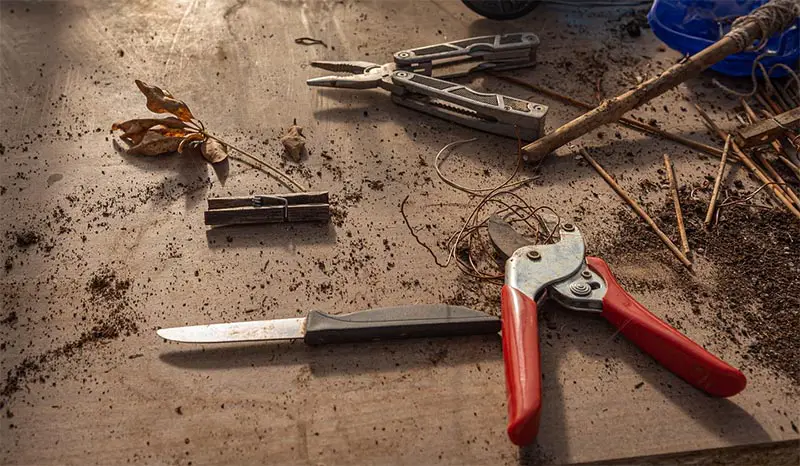
Why Do You Trim A Bonsai Tree?
Trimming a bonsai is essential for maintaining the overall structure and design. It also assists with managing its health and strength, removing poorly developed leaves or branches. If you spot diseases on any of the stems, you’ll need to remove them before it spreads to the rest of the tree.
When Should A Bonsai Tree Be Pruned?
Bonsai tree pruning is one of the most fundamental practices of bonsai tree care. Maintenance pruning is performed during summer and spring when there’s fervent growth. When it’s dormant in winter, you can use design pruning. Each species has a different tolerance to how much you prune.
What Is Maintenance Pruning?
When your bonsai starts developing quickly in spring and summer, you’ll want to control which shoots grow quicker than others to maintain the overall shape. This practice is called maintenance pruning. You’ll wait for the stems to grow 4 to 5 sets of leaves before cutting back to two. It also aids with excellent ramifications.
What Is Design Pruning?
Also referred to as structural pruning, you’ll perform it during winter when the bonsai tree is dormant. There are fewer leaves and development to worry about, and you can cut unsightly branches and stems to correct the design or towards a new concept. It helps make it stronger and healthier for the next season.
Are Bonsai Trees High Maintenance?
Since they’re so small and fragile, especially in the younger years, bonsai tree maintenance and care are of the utmost importance. Some species are low maintenance, but you’ll still need to monitor them daily to watch for any rapid growth or unsightly leaves.
How Much Maintenance Do Bonsai Trees Need?
It depends on how quickly your bonsai grows during the warm seasons. Some species develop rapidly, in which case you may need to prune up to four times per week. In other situations, you might only need to trim twice a month for proper bonsai tree care. For some, the clip and grow technique requires constant maintenance in spring.
How Often Should You Root Prune Bonsai?
When the bonsai is still young and small, you’ll need to perform root pruning every year to ensure it doesn’t suffocate the soil. As it grows older, you can start expanding to every second year. Once it hits the mature age of ten years old, you can wait for longer periods.
Where Do You Prune Bonsai Branches?
If you want to remove an entire branch, you should cut it just above the section where it connects with the rest of the tree. However, you might be pruning to create more branches. In this case, you’ll cut above the node you want to keep between two leaf sets. For propagation methods, you can read our guide on how to grow a tree from a branch.
Pests And Diseases
Next up, we’ll evaluate the pest and diseases aspect of bonsai tree care. These critters can mean the death of your miniature landscape, so it’s always best to keep a lookout for them. Here are some guidelines.
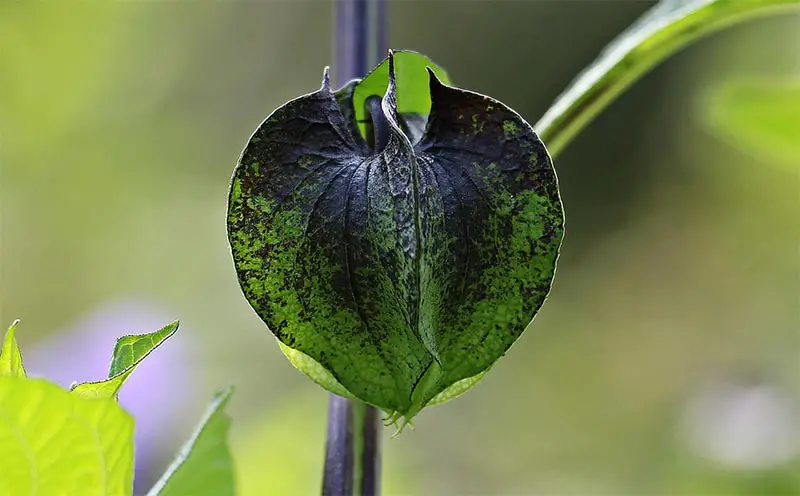
What Is Eating My Bonsai?
While there are many pests that love to attack various species, aphids, and white bugs in soil are two of the most common ones. These feast on the sap in the trunk and roots, but you may also find some hiding under leaves. Most of these are green, but you’ll also find some in white, black, or grey.
How Do I Get Rid Of Bugs On My Bonsai Tree?
Firstly, you’ll need to identify which type of bugs are eating your bonsai. In most cases, you can make a soapy solution at home to deal with them naturally. You can also use neem oil, while there are a variety of tree-friendly insecticides you can buy that will also do the trick.
How Do I Know If My Bonsai Has Root Rot?
This disease can easily kill your bonsai if not resolved quickly. For instance, Money Tree root rot can be detrimental to its health, even if you’ve grown it for several years. Signs include yellow or falling leaves, ragged edges, dying branches, a swollen bark, and wilting stems, to name a few.
Can You Spray Bonsai With Insecticide?
If you want to practice proper bonsai tree care, it’s best to remove as many of the bugs by hand if you can. If not, there are organic, safe insecticides you can try that don’t have harmful chemicals seeping into the soil. However, you can try solutions like soil drench if you don’t want to spray anything on the foliage.
What is the Best Insecticide for Bonsai Trees?
Neem oil is becoming incredibly popular among bonsai enthusiasts as an organic solution to pests. It covers more than 200 bugs and insects and will protect your tree for many years to come. The product is easy to apply, and it also regulates the tree’s growth quite well.
How Do You Apply Neem Oil To A Bonsai Tree?
Since the neem oil is concentrated, you’ll need to dilute it with water following the instructions. In most cases, you’ll use four teaspoons per gallon. Place the mixture in a spray can and apply it to the upper and lower surfaces of leaves. It will kill any pests that come in contact with it, providing the ultimate care for your bonsai tree.
What Is Insecticidal Soap For Plants?
This soap has fatty acids that break an insect’s exoskeleton. It causes it to dehydrate, leading to its death. It deals with a massive variety of pests, and it’s also an eco-friendly solution that won’t damage your bonsai tree or soil.
What Is The White Stuff On My Bonsai Tree?
Indoor plant mold or mildew usually forms when there’s insufficient light or ventilation in the area. They thrive in wet or damp conditions, and you can find them on the soil, stem, branches, or leaves. It also forms if you don’t provide daily bonsai tree care, such as keeping it clean from dust and debris.
Why Does My Bonsai Have Black Spots?
If you spot tiny black spots on the underside of leaves, then your bonsai has a fungal disease. The only way to treat it is to purchase a fungicide from the closest bonsai or plant store. However, the Black Spot disease usually affects all the leaves, so it may be old age or sunburn if there’s only one or two.
How Do You Get Rid Of Fungus On A Bonsai Tree?
In some cases, you can clean the mold and mildew with a damp cloth. We also recommend improving the ventilation and lighting in the area, and try to dry the air a bit. If you have a dehumidifier, that could also help. Finally, you can use fungicide for the worst-case scenarios.
What Fungicide Can I Use On Bonsai?
There are several good fungicide products on the market that will help remove and prevent further growth. It’s best to get advice from a professional based on the species you have in your nursery. However, constant bonsai tree care, cleaning, and maintenance is the best prevention and cure.
What Does A Sick Bonsai Look Like?
The first sign that your bonsai is sick is by visual cues on the stem, roots, branches, and leaves. You may notice a change of color, while other parts may begin falling down onto the soil. The stems will also shrivel as if they aren’t receiving sufficient nutrients. When a tree is healthy, especially in the warmer seasons, you’ll tell by how vibrant it looks.
Bonsai Fertilizer
Our next section in this bonsai tree care guide looks at how to ensure your precious babies have enough food. Unlike trees in nature that have plenty of minerals in the ground, your bonsais have limited soil in a small pot. You’ll need to help it through spring and summer when it needs more energy to produce shoots, flowers, roots, and seeds.

How Do You Fertilize A Bonsai Tree?
There are various bonsai tree fertilizer types you can apply, mainly solid and liquid. If the former, you’ll merely place the sticks or pellets on the soil. It will slowly disperse towards the roots and keep for a few months. The liquid form dilutes with water, and you’ll apply it more regularly since it either drains out the pot or the roots absorb it quickly.
Do Bonsai Trees Need Special Fertilizer?
Most fertilizer consists of three main nutrients: nitrogen, phosphorous, and potassium. The species type will determine which ratios you need, as it differs as you care for each bonsai tree. However, you can buy a general one to cover as many species as possible, as long as it provides them with food to sustain them in spring and summer.
When Should I Feed My Bonsai Tree?
The best time to feed them for proper bonsai tree care is during spring and summer when new growths appear. They’ll need as much food as possible to produce new stems, branches, and flowers. You might also need to feed them in autumn so they can store carbohydrates for the coming winter. However, you should stop during the cold, wet season while it’s dormant so it can rest.
What Is The Best Time Of Day To Fertilize Bonsais?
If you want good bonsai tree care, you should aim to fertilize in the early morning before the sun rises. You can also perform this task late in the evening if you’re worried you won’t be able to stand up in time. It gives the roots enough time to soak up the nutrients before the first sunlight hits the leaves.
Can You Use Miracle Gro On Bonsai Trees?
Miracle Gro fertilizer sticks are incredibly popular for house plants, but you should take caution with bonsais. Some species prefer acidic pH levels, while others love neutral. These sticks have a tendency to have high nitrogen and potassium levels, which may adversely affect your bonsai’s health. Perform your research before applying it to your soil.
What Is The Best Homemade Fertilizer?
If you want to try your hand at a homemade fertilizer to provide proper care for your bonsai tree, you should try the following:
- Bone meal: 4 cups
- Cottonseed meal: 4 cups
- Baking flour: 1 cup
- Fish emulsion: 3 cups
- Liquid seaweed: 2 cups
You’ll start with the bone meal, cottonseed meal, and flour first before adding the other ingredients. By using a PVP pipe, you can form small cakes that you’ll place on the soil for slow dispersion when you water.
Are Eggshells Good For Bonsai?
Powdered eggshells are rich in calcium and potassium, both of which many bonsai tree species love. Calcium aids the cells walls in making stems more rigid and strong. Potassium helps the tree resist diseases and pests. However, you should check that the species you have can handle high levels of both minerals.
Is Coffee Good For Fertilizing Plants?
Coffee grounds are excellent for improving soil aeration, drainage, and water retention. It also attracts microorganisms, which are beneficial towards healthier soil and roots. You can pour it straight into the soil, or make fertilizer out of it that you can place on top.
Bonsai Soil
In this final section of our bonsai tree care guide, we’ll look at how to keep your soil healthy. If you don’t, it can lead to several complications for your miniature landscape. We’ll cover a few of the most popular questions we usually find for this topic.
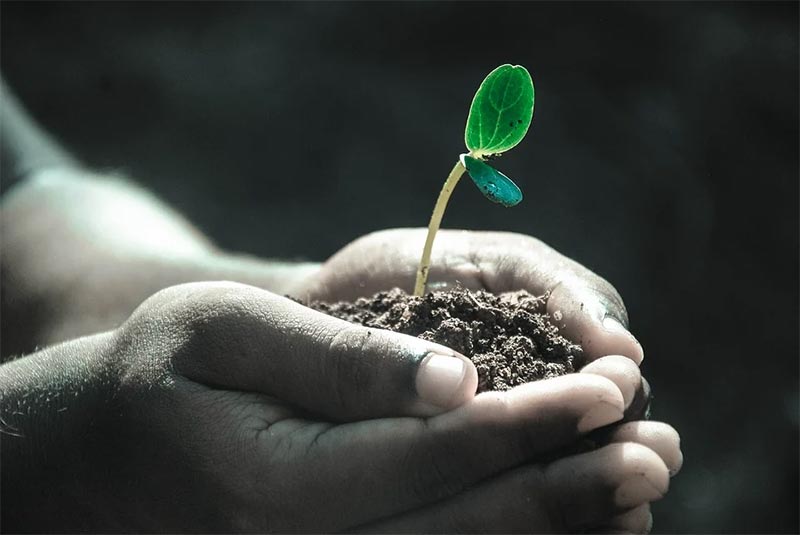
Can You Grow Bonsai In Normal Soil?
We don’t recommend growing your bonsai in normal potting soil. There’s inadequate drainage, and it tends to lead to root rot. If you prefer using standard mixtures, look for ones with pine back to assist with aeration and drainage. You can also ask your local plant store for a proper bonsai mix.
How Often Should You Change Soil For Bonsai?
It depends on your tree species and container size. If you’re growing from seed, you might need to change after the first year due to vigorous root growth. After that, you can start repotting every second year until the tree matures. Older bonsais require less frequent potting.
How Do I Know If My Bonsai Needs Repotting?
An excellent indicator of when to change the soil for proper bonsai tree care is the roots. If they are growing out of the drainage holes or smothering the soil, it’s time to change it. You can softly dig in the soil to see if there’s still enough aeration or if there’s a foul odor. If the roots don’t look healthy, you may want to consider repotting the bonsai.
Should I Water Bonsai After Repotting?
It’s best to wait a few days before you water after repotting. You need to give the roots a chance to heal, while it also needs to become more stable. It’s also best not to fertilize for the next six weeks to give the bonsai time to rest after the stress caused by changing soil and breaking roots. If you feel that the soil is too dry, you can apply some water without going overboard.
Why Is My Bonsai Soil Molding?
If you see white mold on the soil, there’s a good chance it could be mildew. It’s often caused by overwatering or damp conditions. There’s a good chance it could also be calcium deposits from any fertilizer you’re using, so ensure you check it with care before applying any fungicide to your bonsai tree. Give the substrate chance to dry by placing it in direct sunlight near a window or on the sill.

Are Bonsai Trees Hard To Care For?
In general, bonsai tree care is easy to perform. They love to grow under the right conditions, and there are many species that thrive even in the worst environments. If you spend every day checking them for any problems and if they have enough light, water, and nutrients, you’ll see it isn’t that challenging to maintain.
However, there are some species that are incredibly fussy. They need the ideal conditions to grow strong and healthy, while a slight deviation could cause them to wilt quickly. You also need to prune and maintain them in a specific way, while others desire certain pH levels.
The most significant aspect of bonsai tree care is performing adequate research on your species. Don’t merely read the first source of information you find, but read up on as many articles as you can. Every bonsai tree has a specific way you need to care for it.
It helps to keep a record of when you perform different tasks, such as repotting, fertilizing, and pruning. Not only will you learn from it for future cuttings and bonsais, but you’ll know when you need to do it again. You’ll also ensure that you don’t fertilize or trim too often.
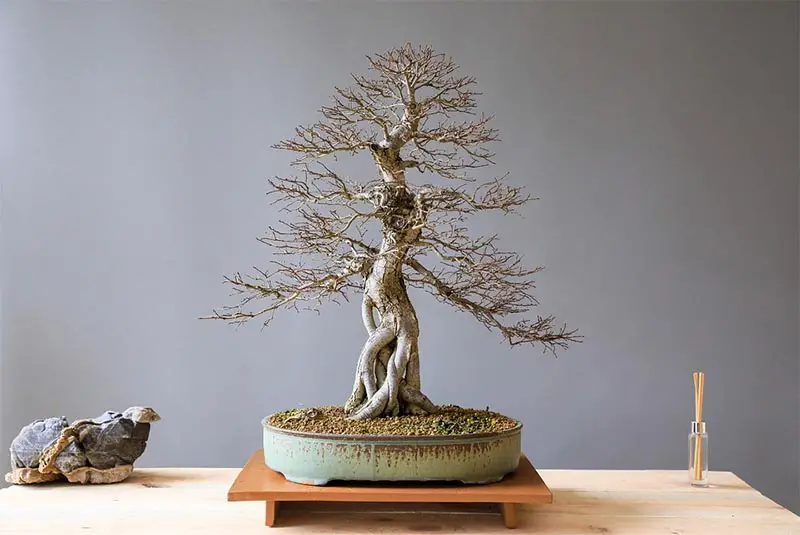
Do Bonsai Trees Die Easily?
If you don’t provide the essential bonsai tree care, it will die quickly. Every species has different needs with regards to water, fertilizer, sunlight, placement, soil, and humidity. You’ll also need to prune it now and again so it doesn’t grow too rapidly.
While your bonsai tree won’t die immediately, the lack of care may kill it over time. If you ignore the signs that it isn’t doing too well, you can’t expect it to keep growing and producing new shoots. There’s only so much punishment it can take before it can’t survive in those conditions anymore.
Of course, there are plenty of hardy trees that can handle neglect to a certain degree. While we don’t recommend it, you can easily come back and care for your bonsai tree again to bring it back to full health. In most cases, beginners forget to water them, which is what leads to their death.
One of the most challenging aspects of maintaining a bonsai tree is pruning the roots while repotting. Some species can’t handle the stress and don’t survive for much longer after you place it in the new soil. Others aren’t fond of changing locations or regions, which is why so many die after they arrive when you buy online.
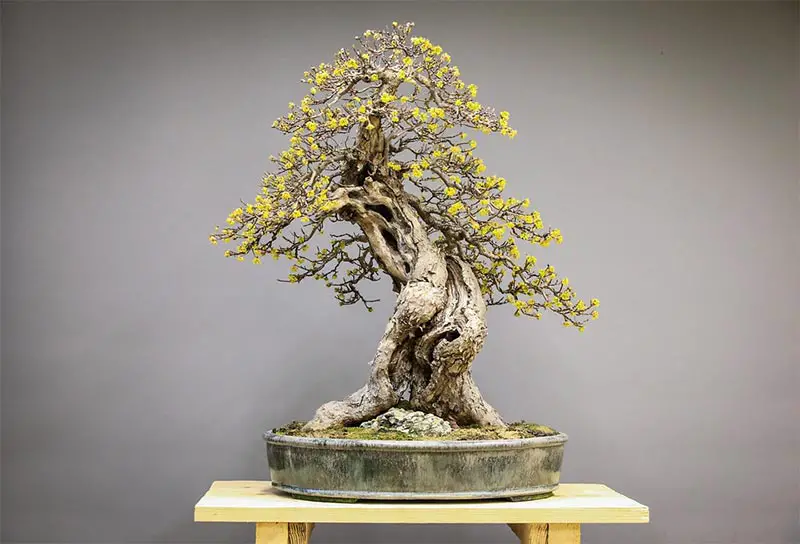
There are many tell-tale signs that your tree may be dying. One common example is when the leaves change color or begin falling off during spring or summer. It usually occurs during autumn or winter for broad-leaved trees, but it’s not expected behavior for evergreens.
Another sign of when there isn’t enough bonsai tree care is when the stem or branches dry out and break easily at your touch. No amount of watering will save it if it’s already dead, and you may be causing root rot if you continue adding liquid. If you touch the tree and it snaps easily, there’s a good chance it’s already dead.
However, don’t be too quick to call it. There’s an easy way to see if there’s still life inside your bonsai. Take a sampling from a healthy part of the tree, whether a thick branch or the trunk. You need to look for a green cambium layer inside. If there is, then you still have a chance to save it.
Sometimes, a bonsai will shed old branches or dying leaves to focus on new growth elsewhere. If only one part of your tree has died, you can still use it as a deadwood feature. By sanding off the bark and cleaning it, it presents a remarkable display against the rest of the thriving tree.
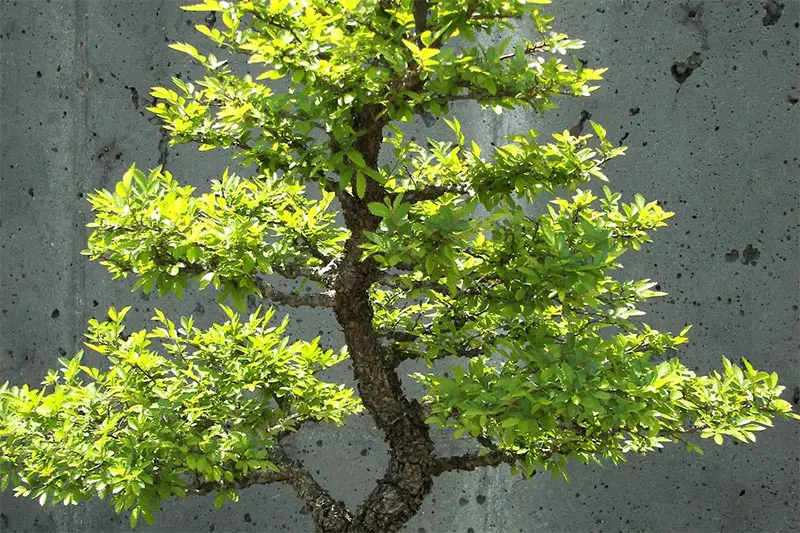
Can You Bring A Dead Bonsai Back To Life?
If it’s a completely dead bonsai tree, there’s nothing you can do to save it. Of course, if it’s only in a dying state with the roots intact, there are some steps you can take to give the tree the proper care it needs to come back to full health.
Here’s what you should do to bring your dying bonsai tree back to life:
- Prune away the dead areas, such as twigs and leaves
- See if the cambium is green and healthy
- Remove dead and infected roots
- Let your bonsai’s roots rest in water for an hour
- Prepare new soil and pot
- Repot the bonsai in the new container
- Place it in the best location for that species
- Water regularly
- Give it time to come back to full life

Books On Bonsai Tree Care
There are plenty of bonsai books that deal with how to care for your trees, whether online or at your local store. While you’ll find many articles on sites like Bonsai Alchemist, we can only share details in bite-sized chunks with links to related posts. It’s a quick way to see how to resolve some minor issues, but it doesn’t always paint a holistic picture.
Books present more comprehensive views on every aspect, and you can open the book and refer to items over and over again. They also showcase first-hand images so you can view exactly how specific elements look, such as pests and fertilizing. It might not have the glamour of a website, but it looks stunning in a bookrack.
Electronic books, or ebooks, are also incredible sources of information. You can read the pages on your phone or tablet, while studying the details will help your brain absorb the knowledge in a more structured way. They also have a way of telling a tale like a bonsai hero presenting his personal story.
You can visit our Bonsai Books section in our Inspiration categories to see if we have any reviews. We’ll be honest about how helpful they are, and how much they cater to the care of your tree. We’ll also do our best to show you which ones are the top books for various aspects. In time, we’re hoping to cover as many paperback and ebooks as possible.
Final Thoughts
As you can see, bonsai tree care takes patience and diligence to ensure a healthy specimen. Depending on your level of expertise, it can be easy or difficult to maintain.
If you follow the right procedures and keep an eye on all the aspects listed in this article, you should be able to grow a stunning, strong bonsai.







